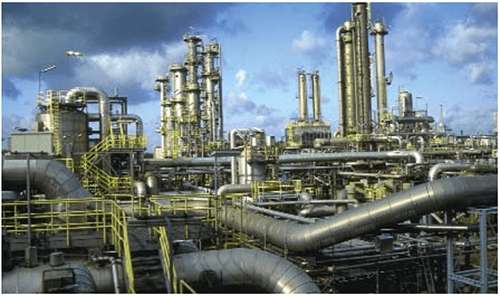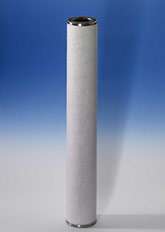A Middle East gas production company operates a major gas processing plant that produces sales gas and Natural Gas Liquids (NGL). The plant processes non-associated and associated gas from onshore oil production plants. After a compression stage, the sour feed gas continues through the Acid Gas Removal Unit (AGRU), or the amine unit, to remove acid gases before the dehydration units and the cold section.
Amine units require an efficient protection to prevent the ingression of liquid and solid contaminants inside the absorber along with the sour gas. Liquid hydrocarbons and solid particles are foaming promoters. They lower the surface tension of the amine and stabilize foam skins. The toxins must be removed down to low levels before they enter the contactor, otherwise, they become destructive – even in small sizes. Left untreated, these contaminants will cause severe operating issues, such as foaming in the absorber, loss of amine due to carry-over, excessive use of anti-foams and processing upsets in the sulfur plant.
A few years earlier, the company invited Pall Corporation to perform a site survey on a plant with a similar configuration. They needed an evaluation of the liquid contents in the gas stream at different locations along the process. Pall’s Scientific & Laboratory Services (SLS) team, a global group of highly skilled scientists and engineers, performed the field measurements. SLS trials highlighted significant liquid carryover downstream of the filter-separators, with liquid contents above 1000 ppmw. The testing confirmed the root cause of the foaming in the absorber column.
Without the proper protection, the foam would reduce production rates and increase maintenance times. The refinery couldn’t afford any downtime or delays. They needed a way to reduce the foaming before it got out of hand.
-
Challenge
-
Solution
-
Results
From the start-up of the plant, severe amine foaming issues were reported which were affecting the gas throughput, causing amine carryover, and requiring a continuous injection of foaming inhibitors. In addition, fouling of the reboiler tubes in the regenerator was reported.
Liquids began entering the absorber. This caused poor separation performance of the upstream horizontal filter-separators. More alarming, it was creating a foaming issue. Even though the volume of liquids draining from the filter-separators was very small, the problem was becoming large. The plant made several attempts to solve the problem. And despite three filter-separators operating in parallel, the situation did not improve.
The gas production company contacted Pall to help cut their foaming issues. Pall’s coalescers were already implemented as replacements for similar horizontal filter-separators in other units within the same complex. The partnership was an easy call.
Pall technicians arrived on site to access the situation. After several technical meetings with the major local contracting company, the group determined that two new SepraSol Plus liquid/gas coalescers would be the right fit for the job. With the plan in place, Pall’s installed the coalescers downstream of the existing filter separators.
Pall designed each coalescer vessel for a gas flow rate of 385 MMSCFD (455,000 Sm3/hr). Each liquid content is set for 1965 ppmw. Coalescer vessels have a 3500 mm (138 in) inner diameter and are 7000 mm (23 ft.) tall. The coalescer vessels have an inlet gas distributor and a horizontal mesh pad. While the SepraSol Plus coalescer cartridges have an upper tube sheet with extra blank plugs for future debottlenecking if needed.
Pall SepraSol Liquid/Gas coalescers were installed in the refinery’s gas feed line upstream of the amine contactor. With our coalescers in place, we were able to remove the entrained liquids in the feed gas. This eliminated the hydrocarbons mixing with the amine and minimized any problems with foaming in the amine regenerator. The amine unit is an important unit at all Gas Processing, Natural Gas Liquids (NGL) Recovery, and Liquefied Natural Gas (LNG) production plants. If the quality specifications are not met downstream of the amine unit, corrosion may occur in the export gas pipeline or plugging in the cold section, with very severe consequences on the production.
SepraSol Plus liquid/gas coalescers can separate both large droplets and sub-micron size aerosols and are a proven solution for numerous critical liquid/gas separation applications found in the Oil & Gas industry. By implementing Pall coalescers, the production company was able to maximize profits by minimizing untimely delays. For more information on Pall's Oil & Gas customized solutions, contact us today.
Read to discover how this can work for your needs? Contact us to speak to our expert filtration team.





